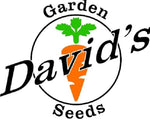Calories in an Onion

How many calories in an onion? These white onions are popping up out of the ground. They are ready to be harvested!
This page talks about calories in an onion as well as the three different types of onions.
Onion bulbing is triggered by day length, and maximum day length during the growing season increases from south to north. Short-day onions are grown at lower latitudes in the south, while intermediate and long-day onions are grown at higher latitudes.
There are several day lengths: Long Day, Short Day and Intermediate Day.

Calories In An Onion: What Type Do You Like?
Generally speaking, long-day onions tend to do best in the North and short-day types tend to do best in the South. Growing onions from seed is often the only way to get varieties really suited to your location. Heirloom onion seeds are usually started indoors in late winter for transplanting outside a month or so before the last frost of spring.
Short-day onions start the bulbing process when day-length reaches 10 to 12 hours. They mature in 110 days when planted in the south during winter or early spring. They mature in 75 days when planted in northern states in late spring but will not get very large. The earlier you plant them, the larger they get.
Click here to see our short day varieties.
Intermediate day onion varieties are the most widely adaptable since they require 12 to 14 hours of sunlight before beginning the bulbing process. Unless you live in far south Florida or south Texas you should have enough daytime hours to make nice-sized bulbs. When planted at the proper time, intermediate day onion varieties mature in approximately 100 days.
Click here to see our intermediate varieties.
Long day sweet and storage onion varieties do well in the northern states that have between 14 and 16 hours of daylight length. Long day sweet onion varieties generally mature a few weeks before long day storage onion varieties and will keep from one to four months, so eat them first. These varieties will do best from the Midwest to the Canadian border. If planted early, long day onion varieties will do well in the northern half of the intermediate day areas.
Click here to see our long day varieties.
Onions come in three colors: red, white and yellow. They have about 44 calories. The more color, the more anti-oxidants that the onion has.
Onions may have several health benefits, mostly due to their high content of antioxidants and sulfur-containing compounds.
They have antioxidants and anti-inflammatory effects and have been linked to a reduced risk of cancer, lower blood sugar levels, and improved bone health.
Commonly used as a flavoring or side dish, onions are a staple food in many cuisines. They can be baked, boiled, grilled, fried, roasted, sautéed, pickled, frozen, dried, powdered, or eaten raw.
Onions vary in size, shape, and color, but the most common types are white, yellow, and red. The taste ranges from mild and sweet to sharp and spicy, depending on the variety and season.
Onions can also be consumed when immature, before the bulb reaches full size. They are then called scallions, spring onions, or summer onions.
And there are bunching onions. Commonly known as scallions or spring onions, bunching onions are bulbless types with a milder flavor than many larger onions. They are highly versatile, and can be eaten raw or cooked in soups, salads, dips, stir-fries, and more. Bunching onions are very hardy, and many varieties are well-suited to winter harvest or overwintering. While other types of onions can be marketed in bunches, true bunching onions are cultivars of a specific species, generally Allium fistulosum, though there are exceptions.







Leave a comment